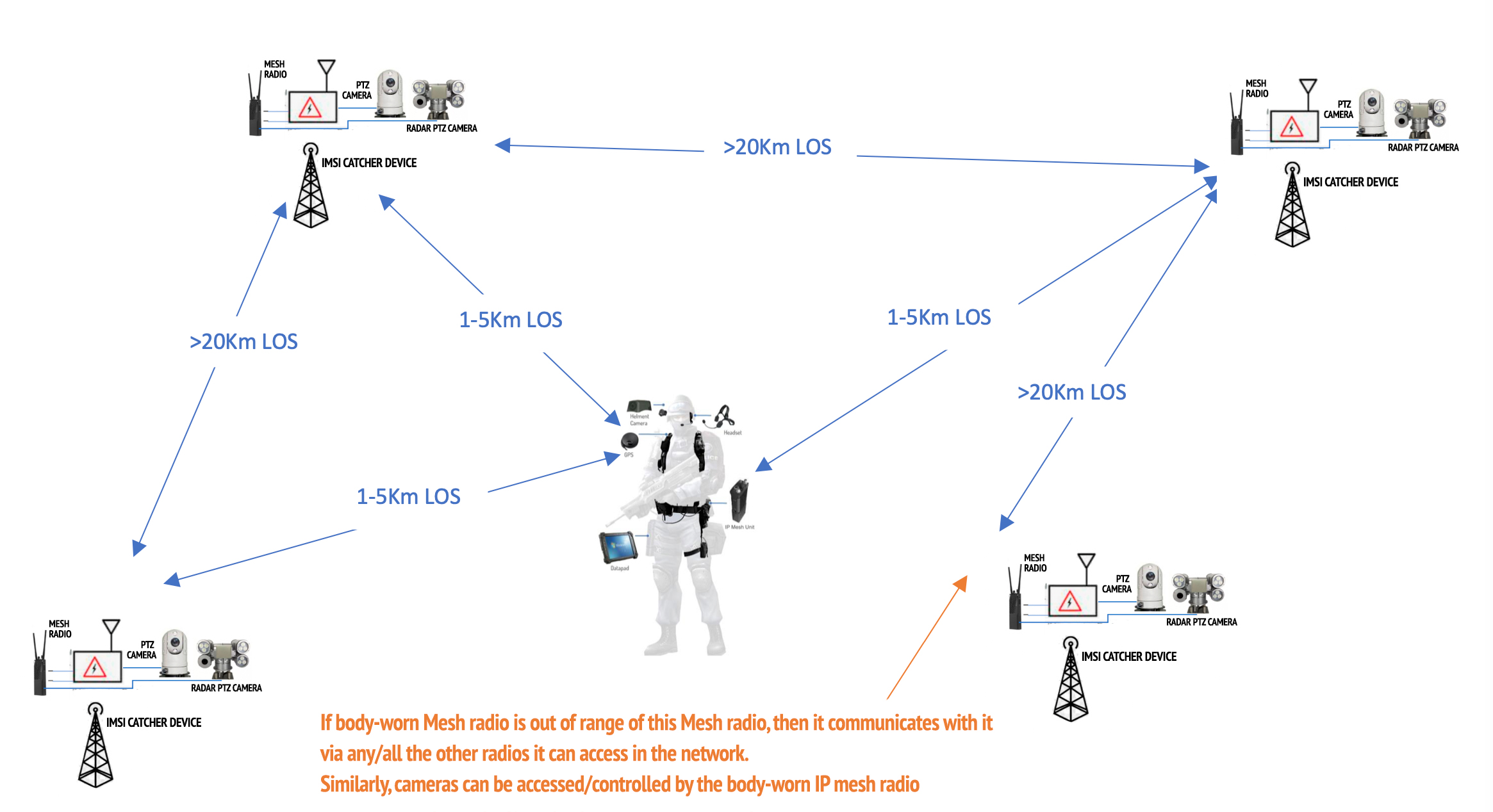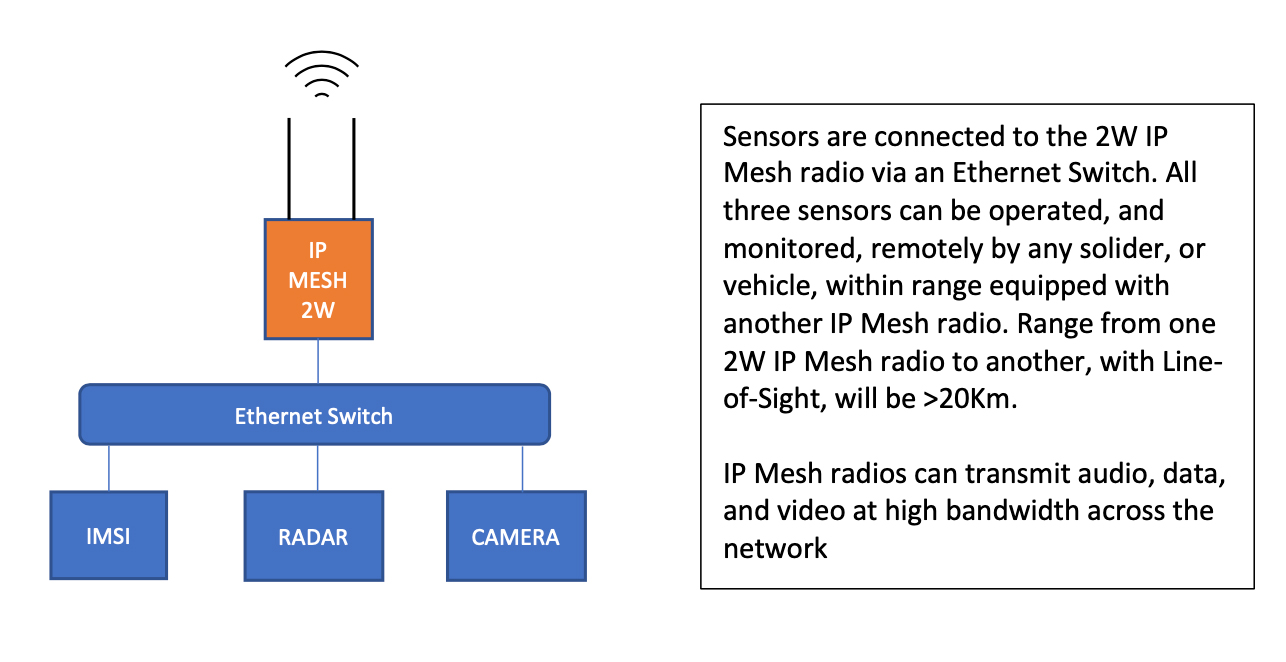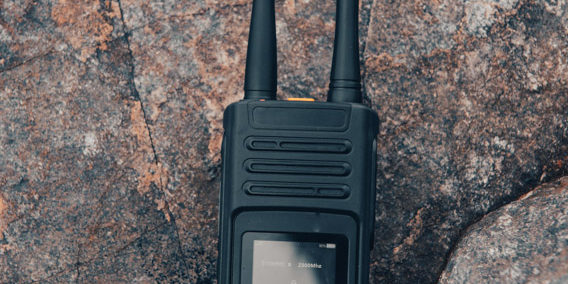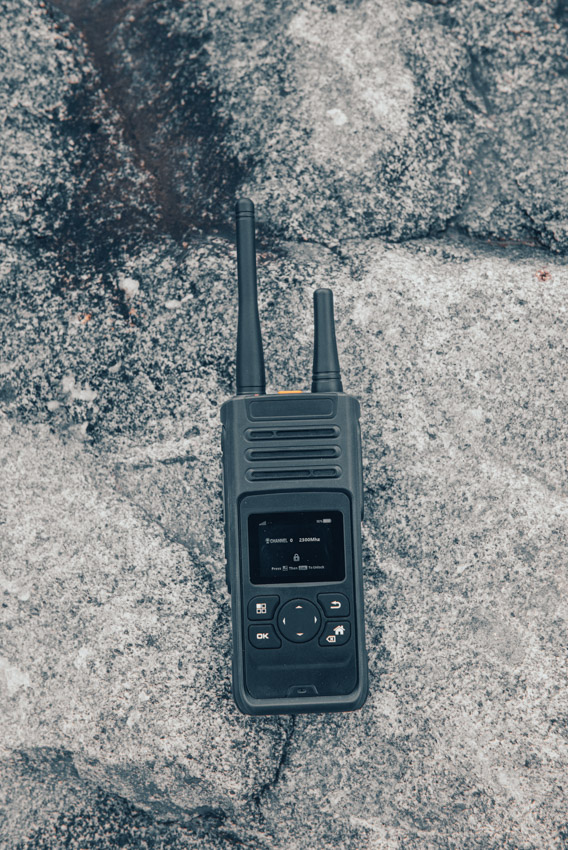IP MESH NETWORKS BACKGROUND
The use of cameras and other sensors in border surveillance is becoming more common. Many unattended and/or unofficial border crossings are exploited by persons seeking illegal entry to a country. This is prevalent in Asian, Latin American and African countries.
Long range camera sensors can operate autonomously, or by remote control and can be a very useful provider of actionable intelligence regarding traffic within range of the surveillance tower.
Sensors are usually deployed either in vehicles, or in backpacks or motorcycle panniers when a close quarters, covert operation is necessary. Border control agencies are also increasingly using them at fixed border posts/immigration posts, where they acquire data on everybody being processed at the border.
The authorities need to be able to monitor the illegal border crossings and sensors can play a role here also.
SCENARIO
A good example for deployment of IP Mesh networks would be a commonly used illegal/unauthorised crossing between, for example, Myanmar and Thailand. There has been media coverage recently of Thai women crossing illegally from Myanmar to Thailand and then being tested positive for Covid-19, once in Thailand. The authorities have been able to quickly identify and apprehend these people and this may be attributed to their use of various types of sensors on the border.
SOLUTION
The challenge with unattended border crossings is to keep the sensors such as cameras and radar, running with mains or battery power, and to keep the device out of reach of the people it is monitoring. If the location of the device becomes known then attempts could be made to destroy or remove the device.
Elevation of the sensors serves two purposes. Firstly, mounting it on a smooth mast or pole at, say, 10m-20m height will make it very difficult to access the device. It will also provide good RF coverage for the antennae.
Mounting the device itself on the pole/mast with the antennae is ideal as long as a secure power source can be provided. Mounting it on the ground, with cables running up to the antennae, can make it vulnerable to the cables being damaged.
The question then arises of how to operate and/or monitor the sensors, when they are elevated. The solution that we have used in the past is to mount an IP Mesh radio on the pole, connected by RJ45 to the sensor. If there are multiple sensors installed around the general area, then each of them can have an IP Mesh radio attached. This then allows the operator to monitor, interrogate and operate the sensors remotely, in a network, from a single point. The range of the IP mesh radio, with only a 2w amplifier will be greater than that of the sensor.
If the IP Mesh radios are within range of each other than they can all be monitored, operated from a single point on the ground, with another IP Mesh radio. If they are dispersed out of range of each other, then a tethered drone can be deployed to hover above the height of the IP mesh radios, so that it can bring them all in to the mobile IP network, and the downloading of data can be performed from a single point.












